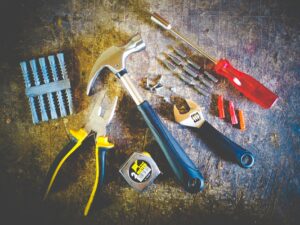5 Why Analysis is a very powerful tool of problem solving.Problem solving is an art.True!But being art doesn’t mean its a random affair.
Do you think any artist can paint beautiful picture without using proper tools and techniques? No! isn’t it?
Same is true for problem solving as well.You have to have certain tools to make problem solving process effective.5 Why analysis is one of those tools.
Table of Contents
ORIGIN
5 Why analysis has origin in toyota way of production.Toyota corporation founded was by Sakichi Toyoda.
Taiichi Ohno, the architect of the Toyota Production System in the 1950s, describes the method in his book “Toyota Production System: Beyond Large-Scale Production”.
“The basis of Toyota’s scientific approach is to ask why five times whenever we find a problem … By repeating why five times, the nature of the problem as well as its solution becomes clear.“
Taiichi Ohno
THE 5 WHY METHOD
5 Why method helps find root cause to complex problems.Its a systematic approach of asking why 5 times to come up with root cause.
Amazing thing about 5 Why analysis is that it provides a relatively permanent solution to most of the problems.
5 Why method is used throughout industry for problem solving.It can be applied to any problem irrespective of the industry type.
“If you don’t ask the right questions, you don’t get the right answers. A question asked in the right way often points to its own answer. Asking questions is the ABC of diagnosis. Only the inquiring mind solves problems.” – Edward Hodnett
Following are the steps for conducting 5 Why analysis effectively
1.MAKE CFT/TEAM
Real problems can’t be solved in isolation.Inputs of each section/department/process owner are valuable and should not be ignored.
Making CFT helps in two ways.First,it gives whole team a sense of partnership,and,secondly it helps take into consideration all perspectives before jumping into conclusions.
Also its very important to visit shopfloor and see the actual problem and take inputs from the people operating at ground level.
Let me give you an example.
There is a soap manufacturer in India.They had a regular complaint of empty soap boxes reaching end customer.They tried many solutions and spent crores in coming up with solution.
They were able to reduce it but could not eliminate it.Reason being all the solutions were derived in conference rooms.Then some body suggested let us take feedback from assembly operator as well.He might give some insight.
When operator was contacted,he came up with an brilliant idea.He suggested what if we put a fan at the end of conveyor.Since empty soap box would be light in weight and would be thrown away by fan’s air.
Had they not involved people working at grassroot level.They would not have got such and amazing solution.
2. CLARITY IN PROBLEM STATEMENT
Most of the organizations fails miserably at this step.They keep on hustling at the wrong post.
Clarity of problem statement is super important.It might take few sessions but without it all else is waste of time.
For better understanding or clarity in problem statement,each member of CFT should understand process well enough.So its better to draw process flow diagram at this stage and explain process to all participants.
Well-defined problems lead to breakthrough solutions.Organizations need to become better at asking the right questions so that they tackle the right problems.
Problem statement should be in simplest form.It helps everyone understand.
For example : leakage in water pump,or, leakage in cup of coffee.The moment i laid down problem statement,you can make image defining it.
Also to bring clarity to problem statement collect all relevant data and correlate as far as possible.
3. Asking First Why
Once the problem statement is clearly defined.We need to ask our first why.
It seems very easy and basic to answer first why.But it takes lots of focused thinking to answer it properly.
Answers should be backed by facts not just assumptions.Its better to visit shop floor and see things for actual to validate.
First why for leakage in cup of coffee would be that there was a crack in the cup of coffee.
4. KEEP ON ASKING WHY
You have to keep on asking why till you reach a logical root cause.
Asking why 5 times is a thumb rule but not a rigid process.You can extend it to 6 or 7 why’s if it solves your purpose or you can reach root cause in only 4 Why’s.
Key is to keep asking why,even if your mind tells you that this the root cause.Believe me this would happen.At 3rd or 4th why you would think its the actual root cause but it might have one or more layers to be peeled off.
CLASSIC EXAMPLE BY TAIICHI OHNO
PROBLEM STATEMENT : Drill machine stopped working
WHY 1 : Blown fuse in control box due to overload
WHY 2 : Insufficient lubrication to the bearing
WHY 3 : Pump was not drawing lubricant.
WHY 4 : Pump shaft was worn,causing it not to function properly
WHY 5 : No strainer in lubrication chamber causing metal chips to damage shaft
REAL LIFE EXAMPLE OF 5 WHY ANALYSIS
PROBLEM STATEMENT : leakage in coffee cup
WHY 1 : Opening at seam in coffee cup
WHY 2 : Adhesive at seam failed
WHY 3 : Adhesive lost its properties due to high temperature of coffee
WHY 4 : Adhesive used not suitable for hot beverages
WHY 5 : Improper design consideration of adhesive in coffee cup.

5 WHY ANALYSIS HAS MULTIPLE PERSPECTIVES
For same problem statement 5 why analysis can have different perspectives.It can be from operations point of view, management point of view,or Design point of view.
While doing analysis taking all these perspective in consideration makes you come up with a relatively permanent solution.
5 why analysis is an amazing tool if used properly.Its all about asking quality questions,and asking them on repeated basis till we reach conclusive root cause.
I hope you like this post.If you do please share it with your friends.
Also answer in comments one real life problem,you would like to do 5 Why analysis for.




